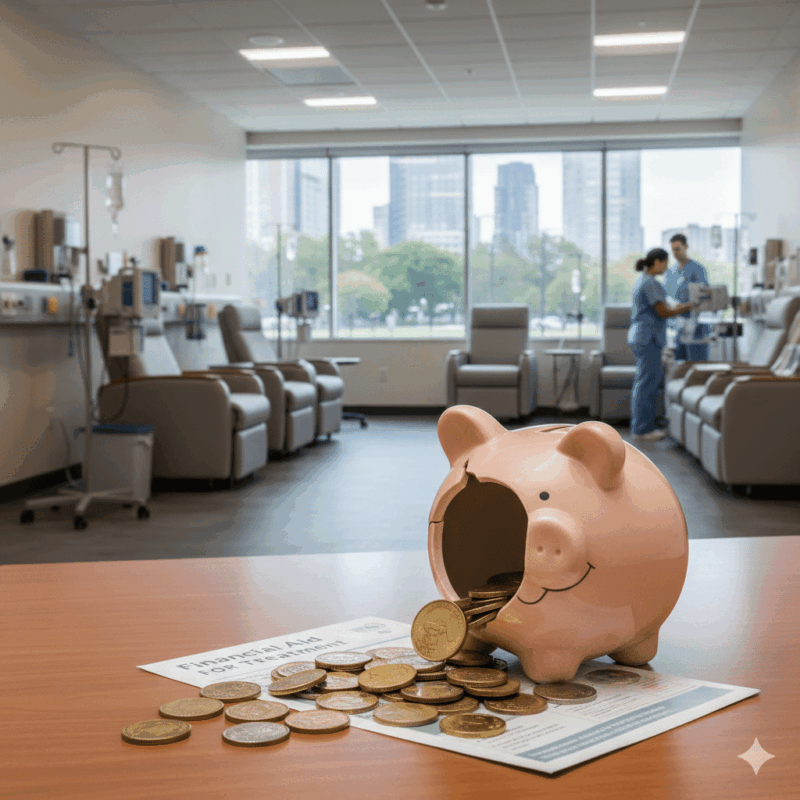The High Cost of Keeping the IVs Dripping
Operating an ambulatory infusion center means walking a financial tightrope. While the primary mission is delivering outstanding patient care, administrators must navigate a business model with inherent financial pressures. At the core of this challenge is the “buy-and-bill” model, which requires centers to purchase extremely expensive specialty drugs upfront—often weeks or months before receiving reimbursement from payers. With the average annual cost for a single infusion patient ranging from $32,000 to $136,000, this systemic delay creates a significant and persistent working capital gap.
This cash flow strain forces many practices into a common but difficult cycle of using often delayed reimbursements from one patient, to cover the drug costs for another (often on net 30 or net 60 payment terms). To bridge the gap, centers may turn to high-cost financing like Merchant Cash Advances (MCAs), which can carry APRs exceeding 100%, or bank loans that demand a personal guarantee, putting the physician-owner’s personal assets at risk. Beyond these direct financial pressures, centers also contend with the “operational drag” of manual, labor-intensive administrative tasks that consume staff time better spent on patient care and practice growth.
The 5% Solution: Turning a Cost Center into a Cash Engine
For an infusion center, drug and medical supply acquisition is the single largest operational expense. However, modern financial tools can transform this cost center into a mechanism for enhancing the practice’s bottom line. A financial platform offering high-yield cash back rewards tailored to medical spending can have a profound impact on profitability.
A corporate card offering up to 5% cash back on purchases from medical suppliers, for instance, functions as an immediate discount on the cost of goods sold. For a mid-sized center spending $100,000 per month on eligible supplies, this translates into $60,000 in annual savings—a direct injection of capital back into the practice. This provides a powerful hedge against constant margin pressure from rising costs and payer reimbursement compression. When combined with a competitive baseline cash back rate on all other business expenses and no annual fee, every practice expenditure can contribute to financial health.
The 30-Day Float: A Powerful Tool for Cash Flow Management
A modern financial platform becomes a central command center for practice finance, enabling proactive cash flow management and operational control. Using a business card for large drug procurements decouples the timing of acquisition from payment, creating an interest-free float of 30 days or more. This bridges the critical gap between paying a supplier and receiving reimbursement from a payer, providing a flexible and less costly alternative to high-risk financing.
These platforms also provide granular control over spending. The ability to issue unlimited physical and virtual cards to individual employees or for specific vendors—each with precise spending limits and approval workflows—shifts the practice from reviewing expenses after the fact to controlling spend before it occurs. This is particularly powerful for managing finances across multiple locations from a single dashboard.
Putting Your Practice’s Finances on Autopilot
The right software platform is designed to eliminate the operational drag from manual back-office tasks. AI-powered receipt matching allows employees to submit receipts via a simple photo from a text or email, where it is automatically matched to the correct card transaction, removing one of the most tedious administrative burdens.
Furthermore, these platforms can integrate seamlessly with leading accounting software like QuickBooks, putting the entire expense management workflow on autopilot. Transactions are automatically categorized and synced, which reduces manual data entry, minimizes errors, and provides administrators with a real-time, accurate view of the practice’s financial health. This automation frees up hundreds of hours of administrative time, allowing staff to focus on strategic initiatives and patient care.
Your Prescription for a Resilient Practice
In today’s complex healthcare market, the financial health of an infusion center is inseparable from its clinical success. Adopting a modern financial platform is a strategic move to build a more resilient and sustainable practice. By systematically lowering procurement costs with targeted cash back, improving cash flow with flexible payment terms, and reclaiming staff time through automation, infusion centers can build a stronger financial foundation.
About the Author
Greg Jo leads pharmaceutical partnerships at Nitra, a leading credit card and financial platform designed exclusively for the healthcare industry. Nitra empowers medical practices to optimize their finances by offering significant savings on medical supplies and automating back-office operations. This allows physicians and office managers to reclaim valuable time and capital, freeing them to focus on practice growth and patient care. To learn more about building a more resilient practice, visit www.nitra.com or contact [email protected].




